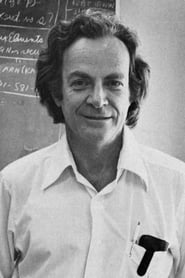
The Character of Physical Law
A series of seven lectures by physicist Richard Feynman concerning the nature of the laws of physics.
- Created By
Richard Feynman
- First Aired on
Nov 09, 1964
- Popularity: 4.2214
- 0 votes
- Networks
- (GB)

- Status: Ended
Show Ended
1 seaons till Nov 09, 1964
Last episode: The Law of Gravitation - An Example of Physical Law
Seasons & episodes
Total 1 seasons, 7 episodes

Season 1
Aired

Episode 1The Law of Gravitation - An Example of Physical Law min
After a brief introduction by Dale Corson, Dr. Richard Feynman discusses the physical law of gravity. He covers its origins through scientific discoveries in astronomy and also Newton's contribution. He then discusses its implications and relationship to other laws.

Episode 2The Relation of Mathematics to Physics min
In this lecture, Dr. Richard Feynman explores the relationship between mathematics and physics. He discusses the use of mathematics, ist power as a reasoning tool, the two traditions in science, and the fact that pursuits in physics have many possible starting points.

Episode 3The Great Conservation Principles min
In this lecture, Dr. Richard Feynman discusses the great conservation principles including those related to electric charge, baryons, strangeness, energy, and angular momentum. He also discusses locality and the principle of relativity.

Episode 4Symmetry in Physical Law min
In this lecture, Dr. Richard Feynman discusses symmetry in physical law. He covers translation in space, translation in time, rotation in space, the principle of relativity, symmetry in atomic particles, changes in scale, uniform angular speed, and reflection in space. He also discusses the relationship between conservation laws and symmetry, and concludes with a brief look at antimatter.

Episode 5The Distinction of Past and Future min
In this lecture, Dr. Richard Feynman discusses the linearty of time, and its irreversible nature. He discusses the related topics of order and disorder, equilibrium, and how these relate to phenomena in our universe.









